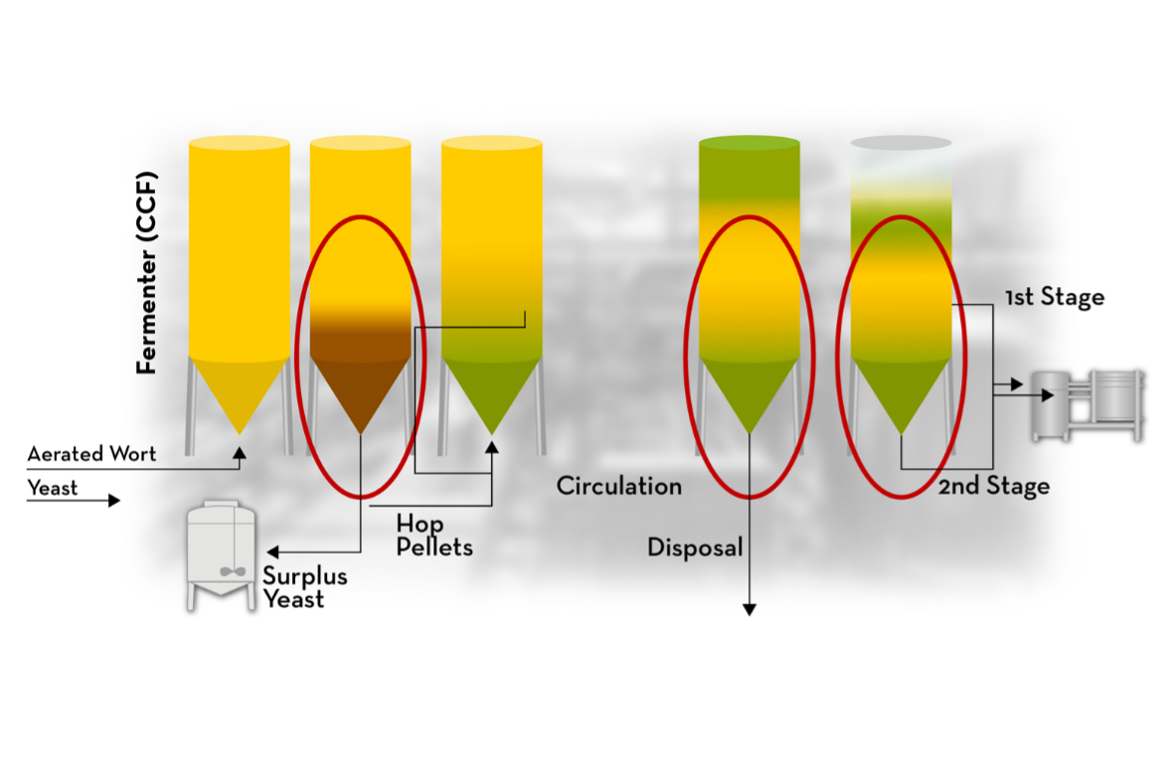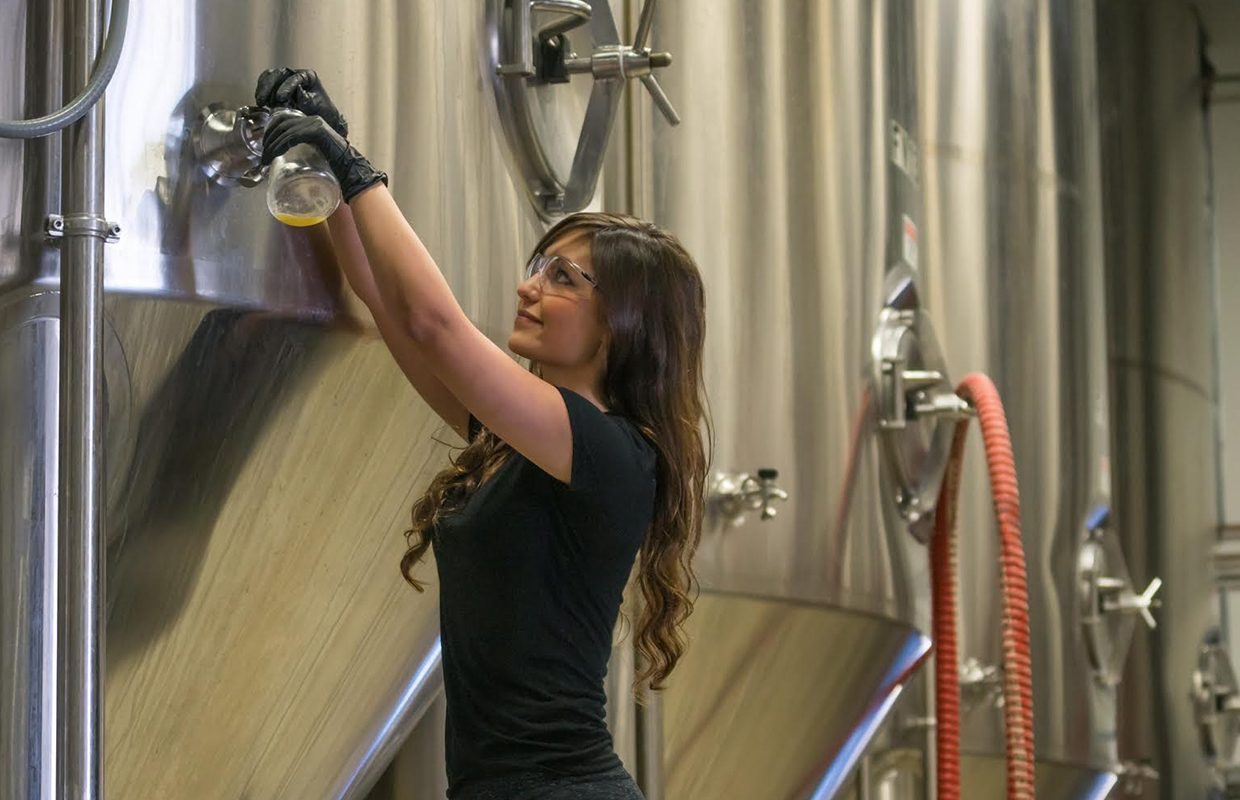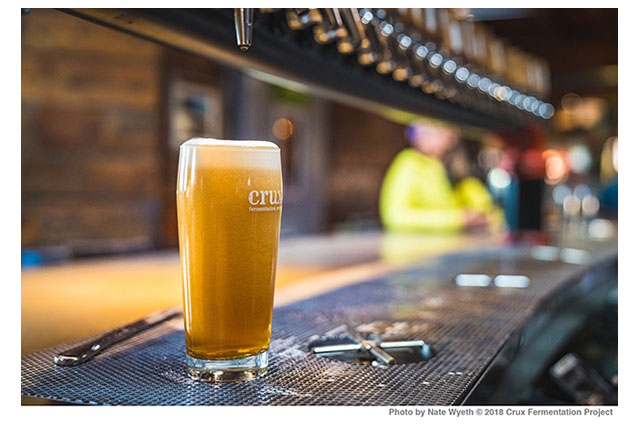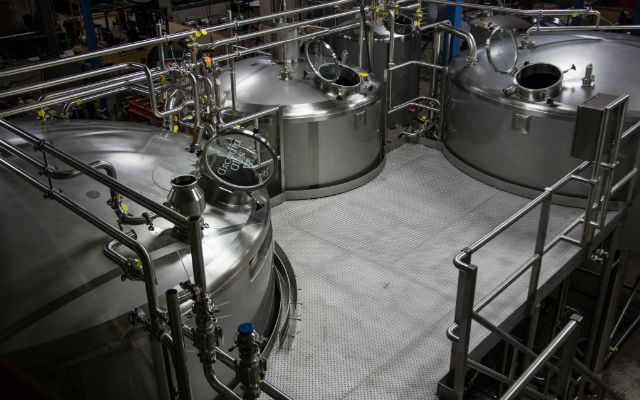
Using a decanter separator in your brewing processes will give you up to a two-digit higher cold block yield with dry hopping. It can also yield about a 10% increase per fermenter, which is an unmatched recovery rate from hops as well as additional recovery from yeast sediment. This leads to lower effluent charges and wastewater costs especially in larger cities.
The hop material can be disposed of by truck or shipped to a landfill, if desired. The results are significantly smoother operation of downstream clarifiers with less discharges, better clarification, and higher capacity. The bottom line is that effective separation technology can help brewers save more beer and profit from going down the drain.
The dry hopping step of the beer brewing process is where the much of the loss occurs. But it’s not just in separating the hops, it can also be yeast, fruit puree, peanut butter, or chocolate, that are added into the fermenters. All of that can be separated from the beer with a decanter to help increase the yield. The red circles in the diagram below are the steps in the process where the largest losses happen.
The first red circle is 2-5 % beer losses with removing the surplus yeast. This typically happens with pilsners and lagers. The second and third circles can be 5-15% losses with hop sludge rack.
Additional challenges that breweries face is the disposal costs for hop slurry. Many are having to pay wastewater surcharges in certain cities, and they are charging more for extra removal.
The decanter centrifuge can handle the very high load of up to 90% by volume. If it can be pumped, the decanter can separate it.
A clarifier centrifuge is much more sensitive to heavy solids loading. Anything more than 5% by volume is an indication that you are likely going to be running very slowly.
The above chart shows the feed solids concentration and particle size comparison between types of centrifuges and other machines.
How does a decanter centrifuge differ from a traditional brewery disk stack centrifuge? A disk stack centrifuge has the lowest solids volume concentration max of 10% by volume or max particle size of 700 microns. That is the smallest window of operation of the machines compared.
A Sedicanter, which is a hybrid of a decanter and disk stack centrifuge, is designed specifically for the separation of yeast, proteins, and other very fine particles. It has a broader range of feed solids concentration but is a bit higher in particle size, so no spent grains or large hop particles would be possible.
Belt presses are primarily used for drying spent grains or producing fruit juice (juicing fruits and vegetables) and can handle concentration and particle size. While the decanter handles the broadest range up to 90% feeds solids. The particle size can be down to 10-15 microns up to above 10 mm. This range is what makes the decanter the best machine for this brewing process.
When considering the best possible beer recovery when it comes to tank bottoms, remember that a lot of the yield can be recovered, and a lot of money can be made from beer that may otherwise be going down the drain. Using a decanter centrifuge can lead to recovering more beer and having more product to sell.
Using a decanter separator in your brewing processes will give you up to a two-digit higher cold block yield with dry hopping. It can also yield about a 10% increase per fermenter, which is an unmatched recovery rate from hops as well as additional recovery from yeast sediment. This leads to lower effluent charges and wastewater costs especially in larger cities.
The hop material can be disposed of by truck or shipped to a landfill, if desired. The results are significantly smoother operation of downstream clarifiers with less discharges, better clarification, and higher capacity. The bottom line is that effective separation technology can help brewers save more beer and profit from going down the drain.
The dry hopping step of the beer brewing process is where the much of the loss occurs. But it’s not just in separating the hops, it can also be yeast, fruit puree, peanut butter, or chocolate, that are added into the fermenters. All of that can be separated from the beer with a decanter to help increase the yield. The red circles in the diagram below are the steps in the process where the largest losses happen.
The first red circle is 2-5 % beer losses with removing the surplus yeast. This typically happens with pilsners and lagers. The second and third circles can be 5-15% losses with hop sludge rack.
Additional challenges that breweries face is the disposal costs for hop slurry. Many are having to pay wastewater surcharges in certain cities, and they are charging more for extra removal.
The decanter centrifuge can handle the very high load of up to 90% by volume. If it can be pumped, the decanter can separate it.
A clarifier centrifuge is much more sensitive to heavy solids loading. Anything more than 5% by volume is an indication that you are likely going to be running very slowly.
The above chart shows the feed solids concentration and particle size comparison between types of centrifuges and other machines.
How does a decanter centrifuge differ from a traditional brewery disk stack centrifuge? A disk stack centrifuge has the lowest solids volume concentration max of 10% by volume or max particle size of 700 microns. That is the smallest window of operation of the machines compared.
A Sedicanter, which is a hybrid of a decanter and disk stack centrifuge, is designed specifically for the separation of yeast, proteins, and other very fine particles. It has a broader range of feed solids concentration but is a bit higher in particle size, so no spent grains or large hop particles would be possible.
Belt presses are primarily used for drying spent grains or producing fruit juice (juicing fruits and vegetables) and can handle concentration and particle size. While the decanter handles the broadest range up to 90% feeds solids. The particle size can be down to 10-15 microns up to above 10 mm. This range is what makes the decanter the best machine for this brewing process.
When considering the best possible beer recovery when it comes to tank bottoms, remember that a lot of the yield can be recovered, and a lot of money can be made from beer that may otherwise be going down the drain. Using a decanter centrifuge can lead to recovering more beer and having more product to sell.




Be the first to comment